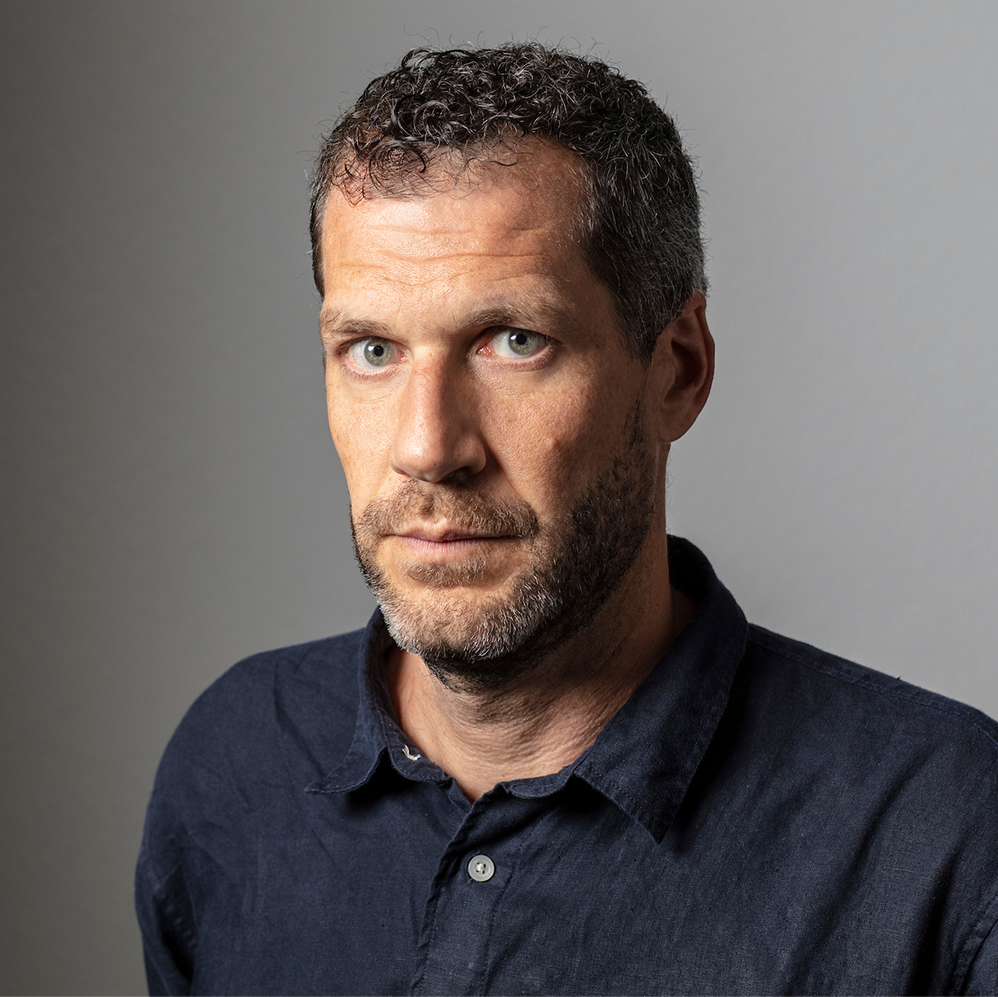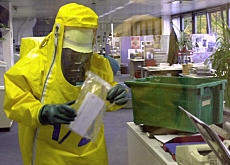Ragweed invades Switzerland

Hay fever sufferers' number one enemy – ambrosia, or ragweed – is now believed to have taken root in every Swiss community, triggering health warnings from government.
swissinfo journalist Dale Bechtel, who thought he’d escaped ambrosia when he emigrated to Switzerland from Canada some years ago, investigates how big a problem the plant really is.
Even though the authorities have declared war on the non-native plant, I was told by members of the Swiss medical profession that there is no cause for alarm – just yet.
“We’re watching developments, and are still discussing what to do and at what point,” explained Arthur Helbling, specialist at the allergy and immunology clinic of Bern’s Insel Hospital.
The doctor treating me for asthma caused by my own over-reaction to pollen takes the same view, telling me that ragweed is not yet an issue among Swiss allergists.
I found their nonchalant response at odds with the warnings about the danger posed by the wind-pollinated plant issued by various public bodies, including the Federal Health Office.
Widespread for years around Lake Geneva and in the southern canton of Ticino, experts fear the weed has now established itself on roadsides and in private gardens across the whole country. Largely to blame is common bird feed found to have contained ambrosia seeds.
The authorities say if ragweed is not effectively combated then 14 per cent of the population – or more than one million residents which are allergic to pollen – could be making frequent trips to the doctor, requiring treatment and taking sick leave.
The cost to the Swiss economy has been estimated at around SFr325 million ($265 million) a year.
Desensitise
I was freed from the ragweed plague and the debilitating symptoms associated with it – sneezing, runny nose, and swollen and itchy eyes – when I moved to Switzerland, only to find myself susceptible to the tree and grass pollens found here.
The immunotherapy treatment I have been undergoing, amounting to monthly injections of allergens over a three-year period, will hopefully weaken my sensitivity to these pollens, but could prove ineffective against ragweed.
The result, as with more than one million other sufferers, could be a hay fever season starting in spring and not ending until autumn.
Dr Helbling’s joking advice is to flee to the southern hemisphere to avoid the lengthened pollen season. Since that is not an option, he advocates treating the symptoms with antihistamines, corticosteroid nasal sprays and inhalers – the latter to treat asthma.
If the reaction to ragweed pollen is severe, patients can consider immunotherapy – in my case, this would mean the start of another three-year round of injections, this time to include ambrosia extract.
aha!
Ragweed is such a new phenomenon in large parts of the country that aha! – the Swiss Centre for Allergies, Skin and Asthma – is running an awareness campaign not only to tell the public of its existence, but the medical profession as well.
Rita Felder of aha! told me general practitioners needed to be better informed to make proper diagnoses when patients come to them in the late summer and early autumn complaining of typical hay fever symptoms.
In partnership with private clinics, aha! has also introduced free “asthma training courses” to inspire potential sufferers to seek the right kind of help before it is too late.
And for the first time this summer, ambrosia is included in the weekly pollen bulletin published by the national weather service. Not only does it include a pollen count, but pictures of the plant’s different stages of growth, and instructions on how to combat it.
The Swiss Commission for Wild Plant Conservation has placed it on its black list of invasive alien plants that not only cause damage to human health but biodiversity too, supplanting native species.
While ragweed can be hard to distinguish from many other common plants, anyone spotting the noxious weed on their property is obliged to report it to the cantonal authorities. But these efforts have yet to bear fruit.
swissinfo, Dale Bechtel
Mixed with sunflower and wheat seeds imported from North America, ragweed was introduced to Europe in the years following the Second World War.
It is widespread in Hungary, Serbia, Croatia, northern Italy and the Rhone valley around the French city of Lyon.
The largest populations in Switzerland are found in cantons Geneva and Ticino. The Ticino city of Lugano registered 15 days last year when high concentrations of ragweed pollen were in the air. Geneva registered four days.
Ambrosia or ragweed can grow to a height of 90cm.
The plant prefers dry and sunny plains, sandy soils and is often found on roadsides and in vacant lots.
The pollination of ragweed begins in late summer and continues until autumn.
A single plant can produce up to one billion grains of pollen year.

In compliance with the JTI standards
More: SWI swissinfo.ch certified by the Journalism Trust Initiative












You can find an overview of ongoing debates with our journalists here . Please join us!
If you want to start a conversation about a topic raised in this article or want to report factual errors, email us at english@swissinfo.ch.